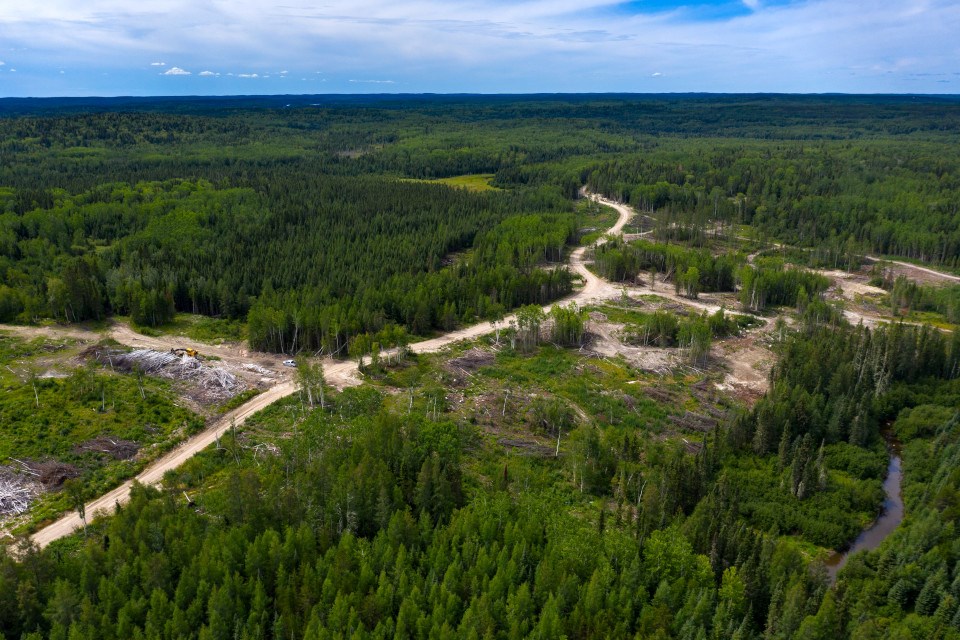Expect to see more drill rigs heading up the Red Lake highway this winter, and well into 2022.
In a webcall with mining analysts last week, executives with Kinross Gold viewed its pending acquisition of Great Bear Resources and its Dixie Project near Red Lake as a multi-deposit mine complex with plenty of operating life and the legs to grow in scale based on its mineral potential.
Toronto-based Kinross announced the cash-and-share transaction of $1.8 billion last week of one of the most talked-about exploration projects in northwestern Ontario. The deal is expected to close in the first quarter of 2022.
Kinross has decided to take the long view with Dixie as the new owners dug into some of the details of their approach to explore and develop the project into the type of operation the company believes can be a "top tier" asset for years and, maybe, decades to come.
Dixie is located 25 kilometres southeast of the town of Red Lake and its world-renowned high-grade gold camp.
The claims on Great Bear's substantial land holdings extend for more than 22 kilometres, leaving plenty of room to make more discoveries.
It's already been quite a year for substantive activity in the Red Lake camp. Australia's Evolution Mining is investing heavily in exploration, underground development, and in acquiring Battle North Gold's nearby Bateman Mine (formerly Rubicon Minerals). Pure Gold entered commercial production during the summer on its PureGold Mine, a revival of the former Madsen Mine.
With Kinross, the strategy is to start production with a high-grade open-pit mine, 350 to 400 metres deep, at a place on the property called the LP Fault Zone, before transitioning, at some point, to a higher-grade underground operation.
Through drilling, they'll be chasing gold extensions from the proposed pit as well as exploring deeper down where Great Bear had been pulling high-grade core samples at more than 700 metres.
Kinross president-CEO Paul Rollinson said Dixie can be a high-quality open-pit mine "on its own," but with large stretches of the property not yet fully explored, "we believe there is significant untapped potential."
To lift the lid on maximizing what's there, Kinross is gearing up for a major 12-month drilling campaign in early 2022.
They'll be budgeting between $50 million and $60 million to do more than 200,000 metres of infill drilling to outline the boundaries of the pit, while also exploring some nearby deposits and promising discoveries on the 91-square-kilometre property.
Just to the southwest of the LP Fault Zone are the satellite deposits and discoveries known as Hinge, Limb and Midwest, which Kinross sees as having open-ended potential for multiple mines on the property and the opportunity to establish an entirely new gold camp at Red Lake.
Analysts on the call felt compelled to ask the Kinross team why it's making a major investment on a gold project that doesn't even have a published resource estimate.
Rollinson and executive vice-president Paul Tomory answered that they've been eyeballing Great Bear and Dixie for three years and have done their due diligence before pulling the trigger on this "well justified acquisition."
They put great faith in the amount of exploration legwork performed by Great Bear's geology team with 340 kilometres of drilling completed from 700 drill holes. Great Bear picked up the property from Newmont Mining in 2017. The discovery, hidden beneath metres of gravel, had eluded many previous exploration efforts by other developers.
The evidence is there, they said, in terms of gold grades, continuity, widths and greater potential at depth.
With the LP Fault Zone, Kinross said Great Bear encountered a unique style of geological structure that resembles the Hemlo gold camp on the north shore of Lake Superior, giving them a greater degree of confidence in the geological modelling of the project, rather than trying to comprehend the trickier Red Lake-style vein mineralization.
Despite there being no resource estimate for Dixie, Kinross execs believe the LP Zone could be an 8.5-million-ounce producer. Gold grades in the pit could be in the 3- to 4-ounce-per-tonne range, while deeper underground grades could reach more than 8 grams per tonne.
Kinross outlined a path to production that starts with a year's worth of infill drilling in the new year to define the pit, before embarking on a preliminary economic assessment a year from now. Step-out drilling will trace further gold extensions and determine the scale of the complex, followed by a prefeasibility study, and finally construction..
With permitting and stakeholder consultation factored in, Kinross, tentatively, places first production in 2029.
The Kinross team said it's not in any particular rush to produce a resource estimate, but plans to spend the next year taking their time on the infill drilling, doing all the technical work and building their own development models, according to Kinross standards.
The company is hoping the capital costs to build a mine and mill can be below $1 billion based on its proximity to critical infrastructure. All the supplies and services in the town of Red Lake are only a 15-minute drive away. The property parallels the Red Lake highway and a major powerline.
Rather than use regional milling capacity, Kinross wants to build and customize its own 10,000- to 15,000-tonne-per-day processing plant that will showcase the latest in technology and environmental standards.
Kinross said it's adopting a "do-no-harm" strategy at Red Lake, promising to minimize its impact on the environment, and will be evaluating the use of an electric and hydrogen fleet in their project studies. All treaty rights and territorial claims of Lac Seul and Wabauskang First Nations will be respected and they plan to deliver sustainable benefits to those communities.
Founded in 1993, Kinross Gold has mines and exploration projects in the United States, Brazil, Chile, Ghana, Mauritania, and Russia, employing approximately 9,000 people worldwide.
